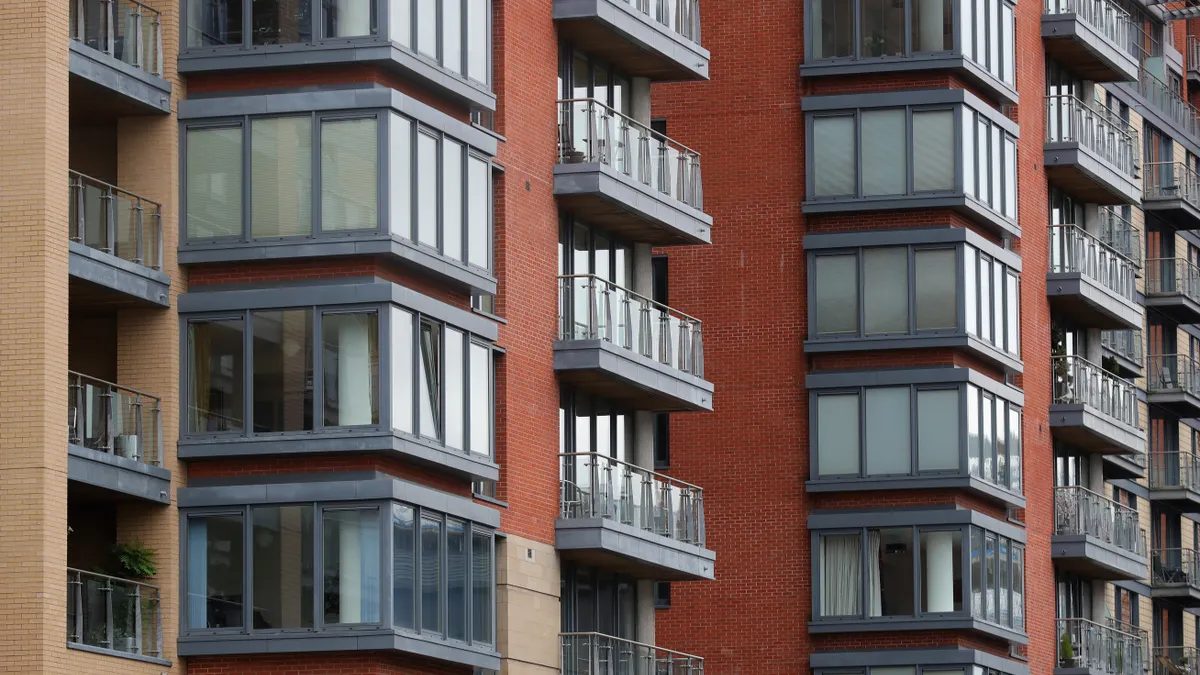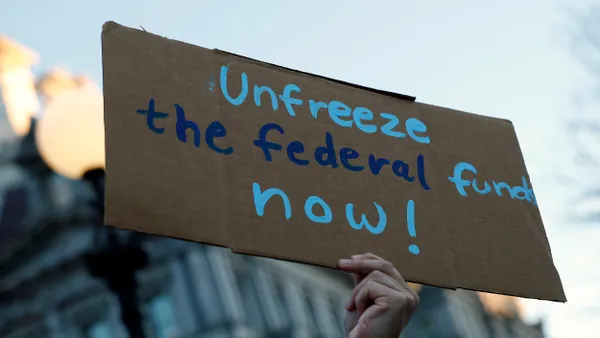Dive Brief:
- As some temporary policy measures designed to keep people housed during the COVID-19 pandemic expire, more nuanced policies to help both renters and landlords will be necessary to maintain affordable housing and correct an “unsustainable” market, according to a report released last week by the Urban Land Institute (ULI).
- The report – based on interviews with tenants, advocates and real estate professionals – found all parties generally agreed that cities and states should implement or enhance programs that provide emergency assistance and long-term support to renters, increase housing supply and ensure safe and clean housing. However, other policy measures such as rent control or zoning reform were more controversial, even among rental advocates.
- Report author Michael Spotts, a senior visiting research fellow at ULI's Terwilliger Center for Housing, said there is a clear need for an “all of the above” approach to housing, but more work will be necessary to clearly lay out the problem and goals. “What we’re often seeing is people debating the merits of policies on completely different terms,” Spotts said during a ULI webinar Wednesday.
Dive Insight:
In the early stages of the COVID-19 pandemic, the federal government stepped in with a national moratorium on evictions for renters and funding for rent relief, a policy that was eventually extended until it was struck down by the U.S. Supreme Court in August 2021. According to an analysis released earlier this month by the Eviction Lab at Princeton University, the moratorium resulted in 1.55 million fewer eviction filings than normal, even as millions of people still reported being worried about whether they could make rent.
Since the Supreme Court’s decision, eviction filings increased by 20% but remained below their historical average. The number of evictions varied across cities, with 23 of the 31 cities the project tracks seeing an increase of at least 10 percentage points compared to historical averages.
Some cities, including Philadelphia, have passed their own emergency measures to offer resources and waivers to renters to keep eviction numbers down during the pandemic.
While the COVID-19 pandemic created momentum for tenants' rights and showed the potential of emergency action, experts agree that more permanent measures will be necessary to keep renters in homes. The ULI report gauged feedback on a number of potential policies but found little consensus. For example, changes to tenant screening regulations can help prevent discrimination and reduce barriers to getting people housed, but owners said it can also lead to “bad faith” tenants. Even measures that would require landlord licensing and place more restrictions on owners were controversial because they could limit the supply of rental properties.
Rent control – which has been implemented in several states including California, Oregon, New York and some cities – may be popular among some renters as a way to prevent costs from rising higher than wages, but opponents say it can make it harder for property owners to keep up with their own maintenance costs. Christina Stacy, a principal research associate at ULI, even said that certain rent control policies can create incentives for landlords to get rid of tenants faster so they can raise rents to market levels.
Minnesota's Twin Cities have captured national attention for a series of housing affordability measures, including Minneapolis’ groundbreaking move in 2019 to end single-family zoning in a bid to increase housing density. This fall, St. Paul voters approved a rent control policy that would cap annual rent increases at 3% per year. Minneapolis voters approved a ballot measure authorizing the city council to write a rent control ordinance, although Mayor Jacob Frey has said he opposes the policy.
Executive Director of ULI Minnesota Stephanie Brown said during the virtual event that the mix of policies is crucial for a region where rents have been rising and supply is short. However, she said, the debate also shows the possible tension among advocates, with questions about whether the region should be increasing supply, capping prices or just creating avenues to homeowners.
“Stability is the broad goal, but there are nuances in that and not a lot of alignment on what those nuances are,” Brown said.
One area that did see more consensus was the need to increase housing supply, both for renters and for first-time homebuyers. Some governments have converted empty hotels to temporary housing for homeless residents; California, for example, had created 5,911 housing units between the start of the pandemic and April of this year, when a 2021 update on the program was published by the California Department of Housing and Community Development. Others have embraced zoning reform to make it easier to build multifamily and affordable housing.
Other solutions cities can also consider, Stacy said, are community land trusts and housing cooperatives, which can lower the upfront cost of homeownership. While they carry their own concerns, Stacy said they can especially help combat the “century of racist policy and planning that directly led to racial gaps in homeownership and wealth.”
“Being cognizant of that history and trying to make up for it,” Stacy said, “should definitely be at the forefront of the discussion.”











